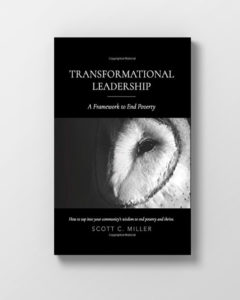The transformational planning process builds a shared vision that generates more commitment and solutions than you had before you started. To transform something requires a clear vision of what life would be like as a result. You must make this visioning process very personal for those you want to engage in your agenda. You must engage Allies in a rich planning process that taps into both their deepest worries and their dreams for the future. You will create strategies for creating the next level of commitment from stakeholders to the shared vision.
There are three reasons to involve others in developing your transformational plan:
-
- To have a shared vision. Peter Senge and other experts on organizational development tell us how rare it is to find a truly shared vision.
- To generate commitment. Shared visions generate more commitment than visions that are passed down from above. People find activities more meaningful if they are involved in developing those activities.
- To create better strategies. The more people enjoy pursuing the vision because it is personally meaningful to them, the more insights and energy you have going toward getting results.
Your preparation for developing a transformational plan is now complete. You developed a clear leadership agenda in Step 1. You have recruited a leadership team, and you have gathered compelling data. You are now ready to engage the community, your staff, and board in the transformational planning process for the purpose of building a shared vision that generates more commitment and solutions than you had before you started.
So, what should the plan look like when it is done? How will you know if you have something that is really capable of transforming your community?
Now, it is time to start writing the plan that will guide you and your stakeholders over the next couple of years. Here are the most important points to consider when writing your plan:
-
- Make it highly readable. Use “language of the heart” to capture people’s attention and to remind them of your passion to achieve the vision.
- Make it specific, holding people accountable to leadership assignments that will make a clear difference.
- Continue revising your drafts until you can reach consensus with your stakeholders. Have them show it to others who will be playing a role. Even if it takes 20 versions, it will be worth it to get full buy-in.
Another tip is to have one key writer who is supported by someone with editing and planning skills. Let these two people synthesize the feedback you receive. Much of the feedback will be about outcomes and strategies.
One rule of thumb with outcomes is that they should challenge the stakeholders of the plan without setting them up for failure. You don’t want your staff, program participants, board members, or volunteers feeling bored because the indicators are too modest or feeling anxious because they are too ambitious.
Regarding strategies, the dialogue needs to be around two questions:
-
- Do we have the right criteria to evaluate the potential impact of our strategies?
- Do we have the highest impact strategies we are capable of implementing?
Learn more: Transformational Leadership: A Framework to End Poverty ~ By Scott C. Miller
To learn more about Scott Miller, please see his website here.

